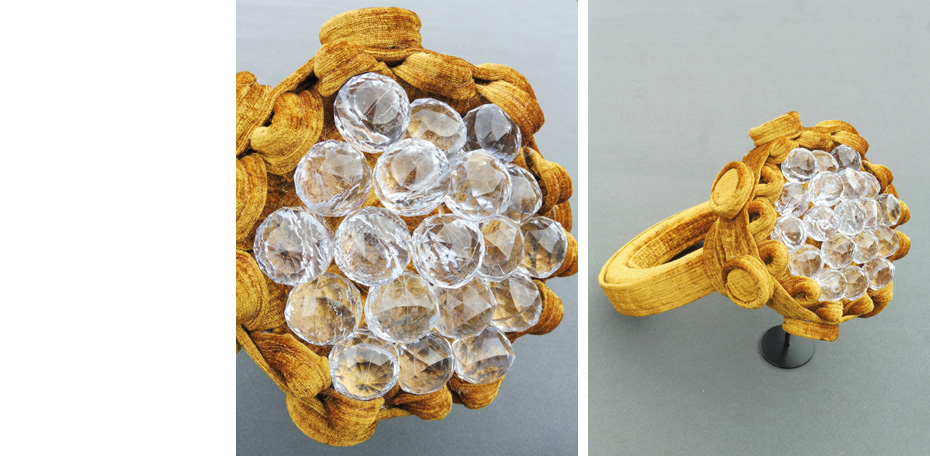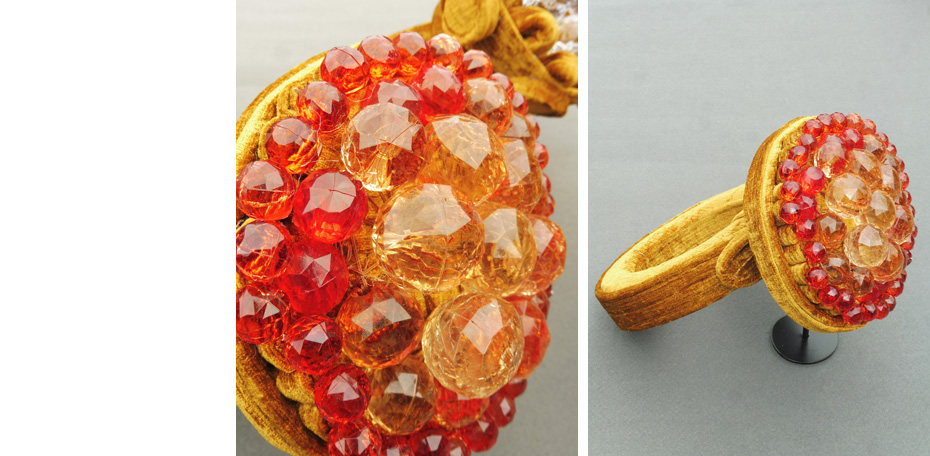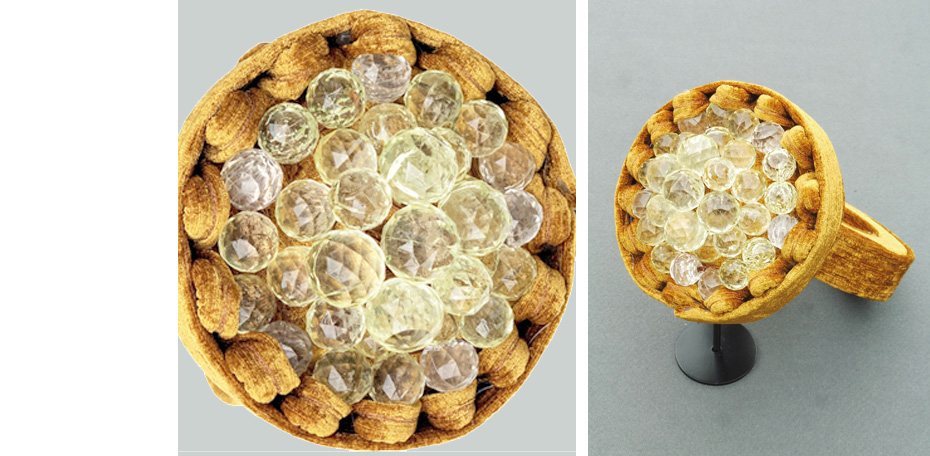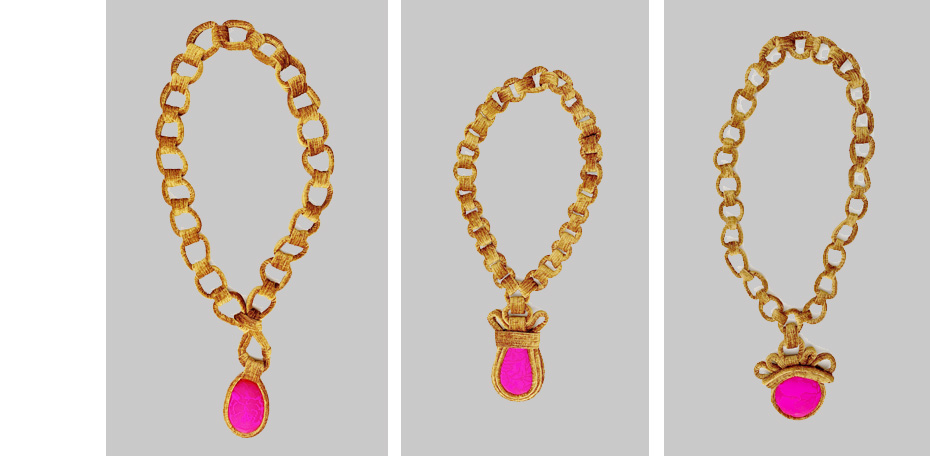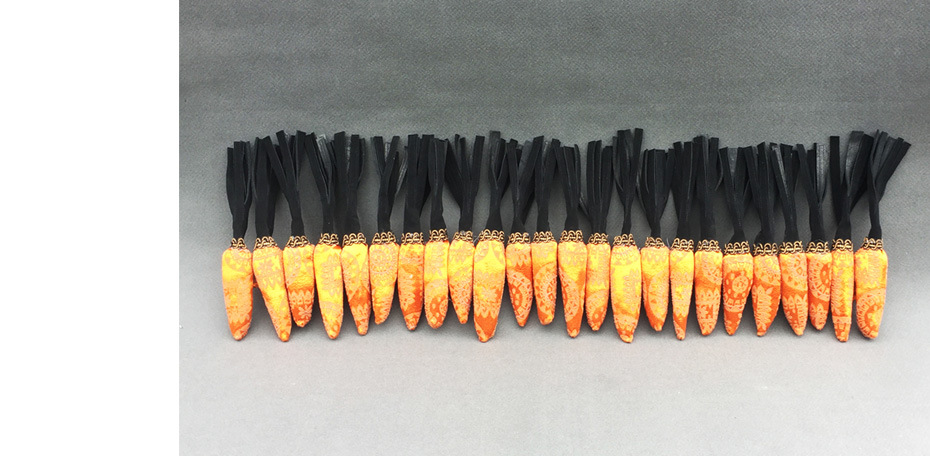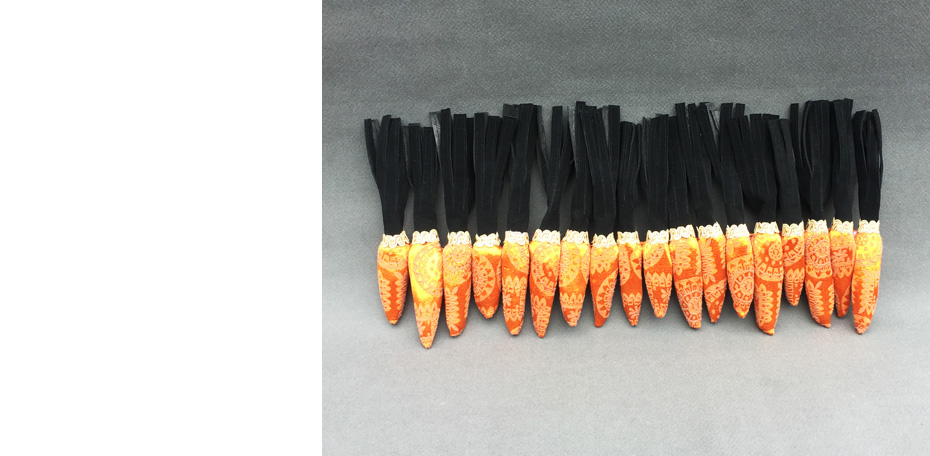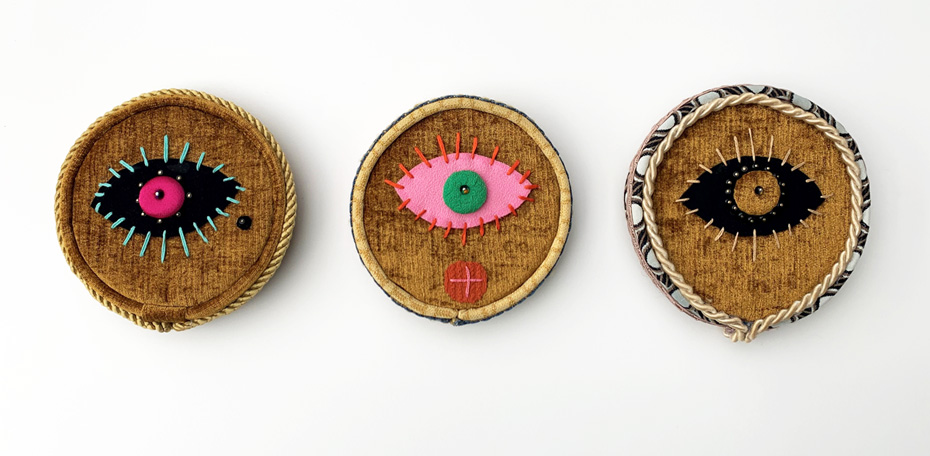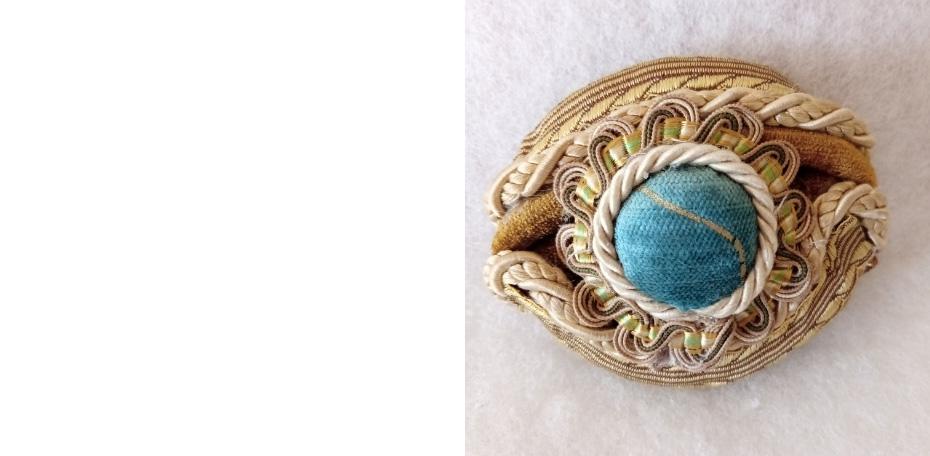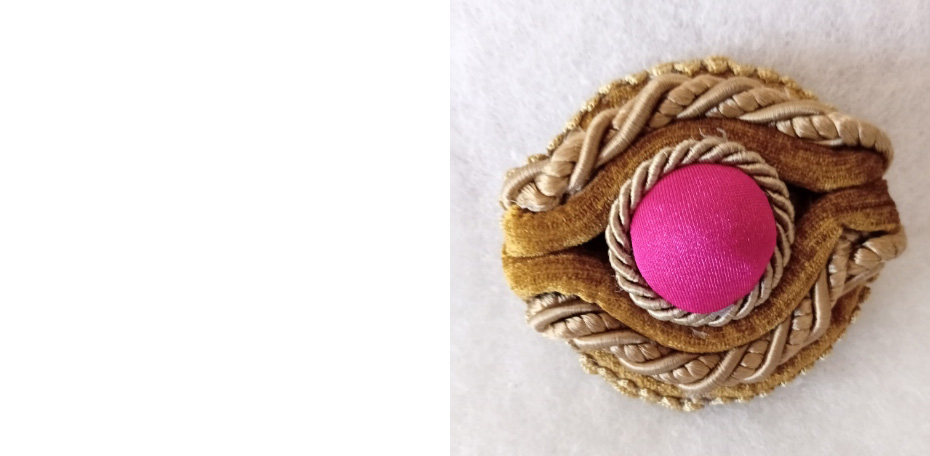GOLDEN RETRIEVER (New work by Lauren Lysaght 2020)
And the sky is black and still now
On the hill where the angels sing
Ain’t it funny how an old broken bottle
Looks just like a diamond ring
But it’s far, far from me.
(John Prine, Far From Me)
At the start of the year Lauren approached me about writing a short piece to accompany her forthcoming exhibition at Fe29 Gallery, Saint Clair. We’d worked together a number of times, most recently on an exhibition of textile figures, the Walhnutu, for a Wellington gallery. For this exhibition, Lauren came up with the idea of creating a fable inspired by the crafty Walhnutu, in the style of a Beatrix Potter book. Now, she was proposing an exhibition of ‘jewellery’ from a fictional deceased estate to be accompanied by an auction-house catalogue. I was to write each entry, making up a backstory for each piece.
From time to time we phoned each other and during our conversations Lauren would talk about the progress she was making, and we would discuss possible storylines for the work in progress. After a while, however, it became apparent to Lauren that her original idea for the exhibition was no longer stimulating or feeding her imagination. As she says, she became frustrated with ‘the literal appearance of the work.’ At this point she ‘decided to go in another direction. Or rather let the work go where it wanted to!’
Around this time Lauren had been looking at Vincent Meylan’s Christies: The Jewellery Archive Revealed [1], a beautifully illustrated volume featuring historical jewellery that had been auctioned by Christies. Many of the pieces had been owned by royalty and aristocrats and Lauren noted that ‘the jewels were sumptuous and I coveted many of them.’ But the more she read, the more she felt certain that ‘a certain amount of skulduggery probably went on to get that jewellery to the auction house’.
One such piece, a signum of the Order of the the Holy Ghost’ created from gold, diamonds, rubies, emeralds, sapphires and pearls had been worn by Mary Queen of Scots on the morning of her execution in 1587. According to records, Christies offered the work for sale in March 1767. The backstory stated that the queen gave the jewel to a Lady in Waiting, and it remained in her family until offered for sale by ‘a gentleman retired into the country’. Details also noted that the ‘well authenticated’ piece, which sold for 12 guineas, had been worn ‘by the King of Malta’[2].
The more Lauren read about the ‘dubious path the jewellery of the beheaded queen took to the auction house’ the more she began thinking about which objects are defined as desirable and ‘precious’ and how we each perceive ‘preciousness’. ‘Perception is a personal thing’ and the things that are made with love, and that we hold dear to ourselves are not necessarily those things that are valued by a patriarchal society.
‘Fugazi’ or ‘fake’ jewellery is considered by many to be second class and yet there is also something very real and authentic about the making and ‘personal value’ of that jewellery compared to expensive jewels. ‘ There is a John Prine song and one of the lines is “Ain’t it funny how an old broken bottle looks just like a diamond ring’ and that rings true to me. Most of my work involves a transformation of a humble material into an exhibition finished piece and some weeks ago I came upon a roll of vintage gold velvet. For me, this is where the ‘fugazi’ fake/ real work begins.’ Laurence Fearnley
[1] Vincent Meylan, Christie’s: The Jewellery Archive Revealed (ACC Art Books, 2017)
[2] William Roberts, Memorials of Christie’s: A Record of Art Sales from 1766-1896. Vol. 1 (London, 1897)


